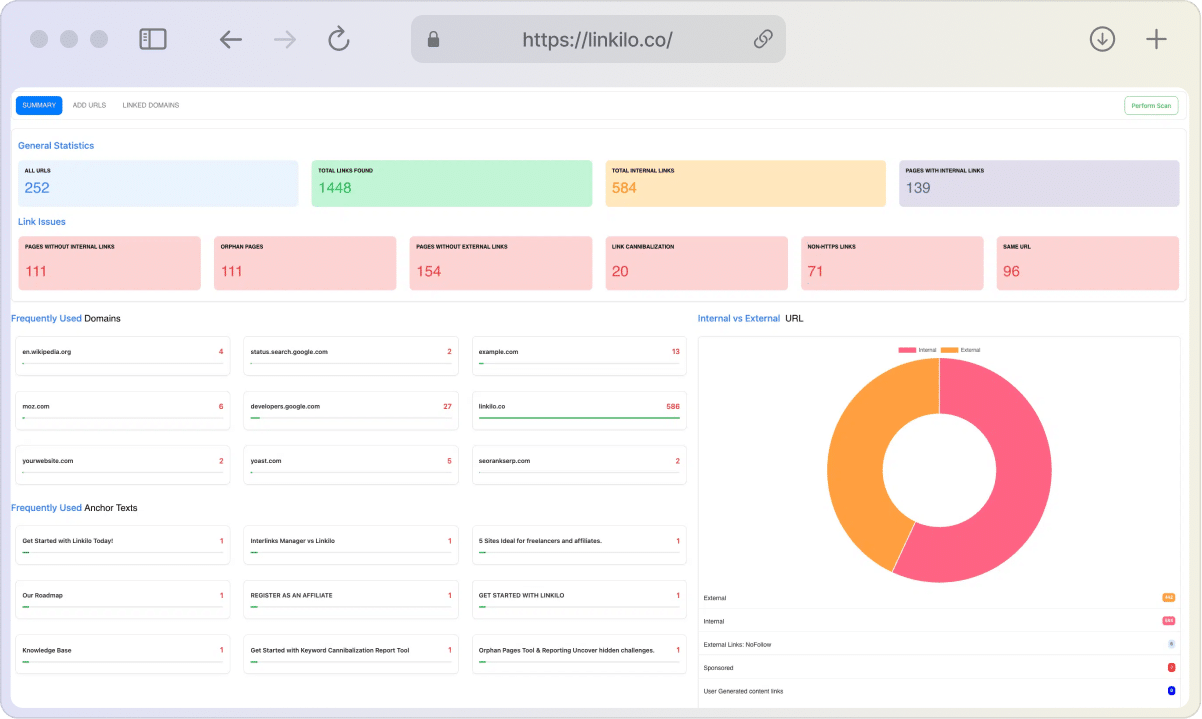As a content marketer or team leader, you’ve likely dealt with the struggle of receiving inconsistent or poorly constructed initial drafts from your team of writers.
While the drafts might be grammatically sound and polished in terms of language use, the time and energy spent editing can be considerable if the drafts fail to meet client requirements, lack the essential keywords, or are incongruent with competitors.
Creating content for your website or blog involves adhering to the three Cs: Content, Convenience, and Conversion. To craft content that is engaging and accessible, you must pay heed to your audience’s preferences and necessities.
If you find yourself dedicating numerous hours to revisions, it’s crucial to arm your writers with a comprehensive content brief that articulates how to develop content appropriately.
What is a Content Brief
A content brief is like the instruction manual for a piece of content. It’s a document that lays out everything from the target audience and goals to the nitty-gritty details of keywords and structure. Think of it as the blueprint that guides the content creation process from start to finish.
It’s not just a list of demands though – a good content brief balances clear direction with creative freedom. You want to give your writers enough information to understand the task, but not so much that it feels like paint-by-numbers. It’s about fostering collaboration and ensuring that everyone is working towards the same goal.
Content briefs also help streamline the approval process. When everyone knows what to expect, there are fewer surprises (and less back-and-forth) down the line.

Why Bother with a Content Brief?
You might be wondering, “Isn’t a content brief just another time-suck?” Fair question. But here’s the deal: a content brief isn’t just another task to check off your to-do list; it’s an investment in your content’s success. It ensures that everyone involved in the content creation process is on the same page. It minimizes misunderstandings, reduces revisions, and saves you precious time and money. In essence, a content brief acts as a roadmap, guiding your content creation journey from start to finish.
Think of it this way: would you build a house without a blueprint? Probably not. A content brief is like the blueprint for your content – it lays out the foundation and structure, ensuring a smooth and successful building process.
What Makes a Content Brief Good?
A good content brief isn’t just a list of demands; it’s a clear, concise, and actionable plan. It needs to be detailed enough to guide the writer but not so overwhelming that it stifles creativity. It should be like a well-organized toolbox, providing the writer with everything they need to get the job done without telling them exactly how to swing the hammer.
The Essential Elements of an Effective Content Brief
Creating a solid content brief involves more than just jotting down a few points. It requires a thoughtful approach to ensure your content meets its goals. Here’s a detailed guide on the essential components of an effective content brief:
- Understand and Define Your Audience: Knowing your audience is the first step in any content creation process. It sets the tone for the entire piece and informs the style, tone, and language to be used.
- Establish Clear Objectives: What do you hope to achieve with this content? Whether it’s to drive conversions, increase brand awareness, or educate your audience, clearly defining your objectives helps align your team’s efforts and keeps your content focused.
- Decide on the Tone and Style: The tone and style of your content should align with your brand voice and resonate with your audience. Provide clear guidelines on this to ensure consistency across all content pieces.
- Outline Keywords and Intent: Identify the keywords to focus on, and clearly state the intent of the article. This is crucial for SEO and for setting the direction of the content.
- Specify Structure and Format: Offer clear instructions on how the content should be structured. This includes guidance on paragraph lengths, use of headers, bullet points, lists, and more. Remember, a well-structured article not only improves readability but also boosts SEO.
- List Down Subtopics: To ensure the content covers the topic comprehensively, provide a list of subtopics or subheadings. This not only gives a clear direction to the writer but also aids in content organization.
- Incorporate CTAs: Guide your writer on where and how to include CTAs in the content. Whether it’s to direct readers to a product page or invite them to subscribe to a newsletter, a well-placed CTA can significantly enhance engagement and conversions.
- Include Links: Specify any internal or external links that should be included in the content. This not only adds credibility to your content but also aids in your SEO efforts.
- Provide an On-page SEO ‘cheat sheet’: Lastly, provide a brief on-page SEO guide. This should include instructions on title optimization, meta description writing, header formatting, keyword usage, and image optimization.
Remember: The goal is to create a comprehensive guide, not a restrictive manual. Allow room for creativity and flexibility. After all, content creation is as much an art as it is a science. Embrace the process and witness the transformative power of well-crafted content briefs in action.

There’s no one-size-fits-all template for a content brief. The ideal format will depend on your specific needs and preferences. However, having a template can save you time and ensure consistency across your content projects. Here’s a basic template you can adapt:
Content Brief Template Example
Project Title: The Ultimate Guide to Baking Artisan Bread at Home
Meta Description: Dive into the rewarding world of home-baked artisan bread with our comprehensive guide. Learn everything from selecting ingredients to shaping loaves and baking to perfection.
Project Objective: The primary goal is to educate readers on how to bake artisan bread at home and foster a love for the art of baking. The secondary goal is to promote our brand’s artisan bread baking kit and increase its sales.
Target Audience: Individuals who enjoy cooking and are interested in learning how to bake bread at home. Likely age range is 30-60 years old, evenly distributed between genders, and they value homemade, quality food.
Tone and Style: Warm, engaging, and informative. Use clear, step-by-step instructions and ensure that technical terms are adequately explained.
Primary Keyword: Artisan bread baking at home Secondary Keywords: Homemade bread recipe, bread baking tips, sourdough bread, whole grain bread, bread baking equipment
Content Structure:
- Introduction (H1): Discuss the joy and benefits of baking bread at home. Use the primary keyword early in the section.
- Why Bake at Home? (H2): Discuss the benefits of home-baked bread—flavor, health benefits, sense of accomplishment, etc.
- Bread Baking Basics (H2): Discuss the basic ingredients and equipment needed for baking bread at home.
- Selecting Ingredients (H3)
- Essential Bread Baking Equipment (H3)
- Understanding the Bread Baking Process (H2): Explain the process from start to finish, including kneading, proofing, shaping, and baking.
- Your First Loaf – A Simple Bread Recipe (H2): A detailed, step-by-step guide to baking a simple loaf of bread at home.
- Exploring Different Types of Bread (H2): Introduce different types of bread that readers can try baking at home.
- Common Bread Baking Mistakes and How to Avoid Them (H2)
- Conclusion (H2): Encourage readers to start baking and exploring the world of homemade bread.
Call to Actions (CTAs):
- Within the content: Soft CTAs such as “Check out our artisan bread baking kit for all your bread baking needs.”
- At the end: Strong CTA like “Ready to start your bread baking journey? Our artisan bread baking kit has everything you need to get started. Order yours today!”
Links to Include:
- Internal Links: Link to our other blog posts like “The Art of Sourdough: A Beginner’s Guide” and “Whole Grain Breads: Why They’re Good for You.”
- External Links: Use reliable sources for facts and data, such as studies on the benefits of homemade food or expert baking tips from renowned chefs or bakers.
SEO Guidelines:
- Include the primary keyword in the title, within the first 100 words, and 2-3 times throughout the content.
- Use secondary keywords at least once in the content.
- Use proper header tags (H1 for title, H2 for main sections, and H3 for sub-sections).
- If images are used, include the primary keyword in the file name and alt text.
- Write a meta description that includes the primary keyword and is between 150-160 characters.
Content Type: Detailed blog post
Content Length: Around 2,500 words
Deadline: [Insert Deadline]
Putting Your Content Brief into Action
Okay, you’ve got your template and a killer content brief filled out – now what? Here’s how to make the most of it:
Share and Collaborate:
Your content brief isn’t meant to be a secret document. Share it with your team, including writers, editors, designers, and anyone else involved in the content creation process. Encourage feedback and discussion to ensure everyone is on the same page.
Use it as a Reference:
Throughout the writing process, refer back to the content brief to stay on track. It’s easy to get sidetracked or lose sight of the original goals, so use the brief as your guiding star.
Measure Success:
Once the content is published, evaluate its performance against the goals you outlined in the brief. Did it achieve what you set out to do? If not, what can you learn for future content briefs?
Adapt and Evolve:
Your content brief template is not set in stone. As you create more content and learn what works best for your team, feel free to adapt and refine your template. The goal is to find a format that streamlines your process and helps you consistently produce high-quality content.
The Bottom Line
Creating a killer content brief is like putting together a puzzle – each piece is essential for the final picture. By investing time and effort into your content brief, you’ll set your team up for success and ensure your content hits the mark every time. So go forth and brief with confidence!




